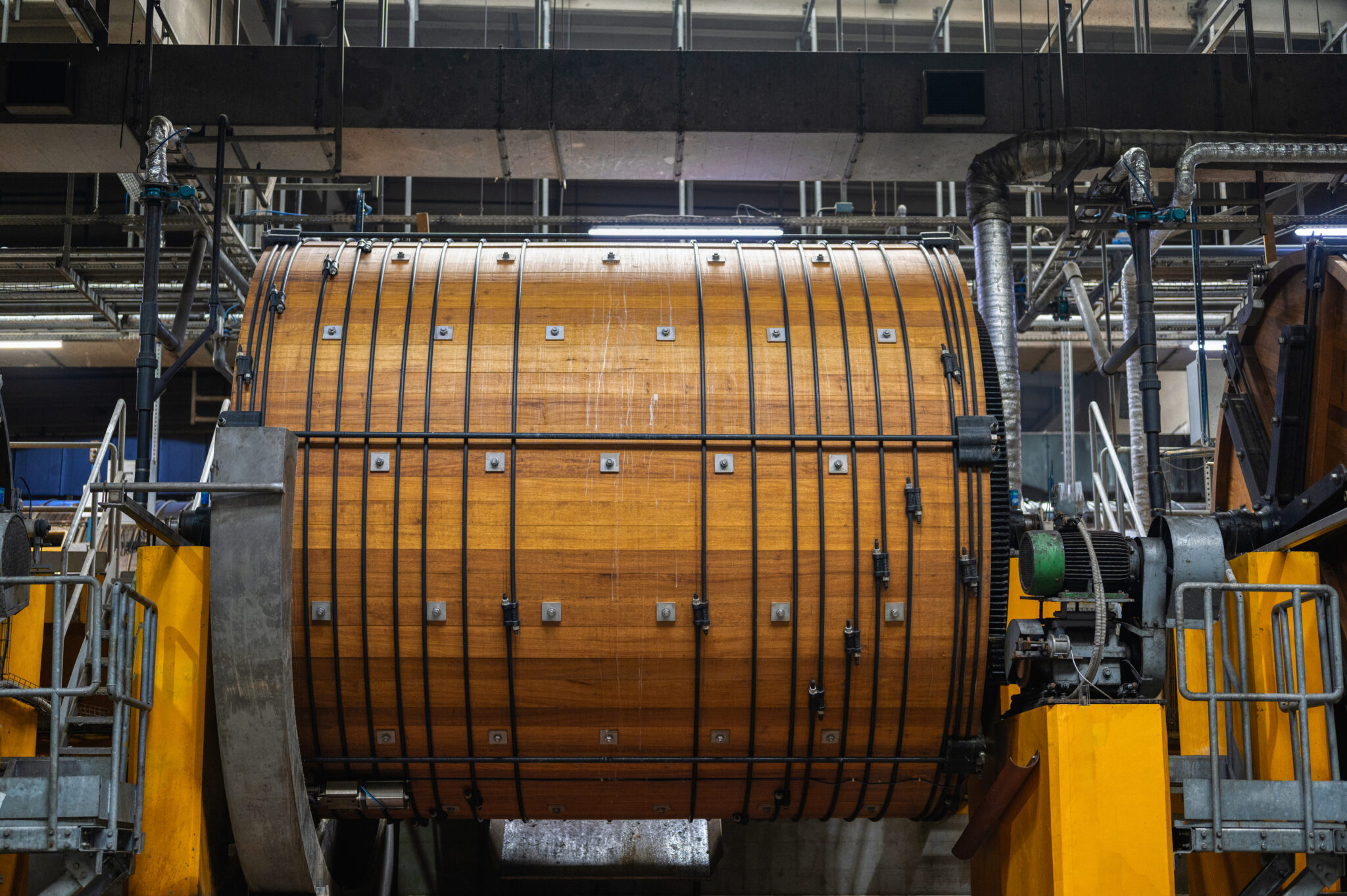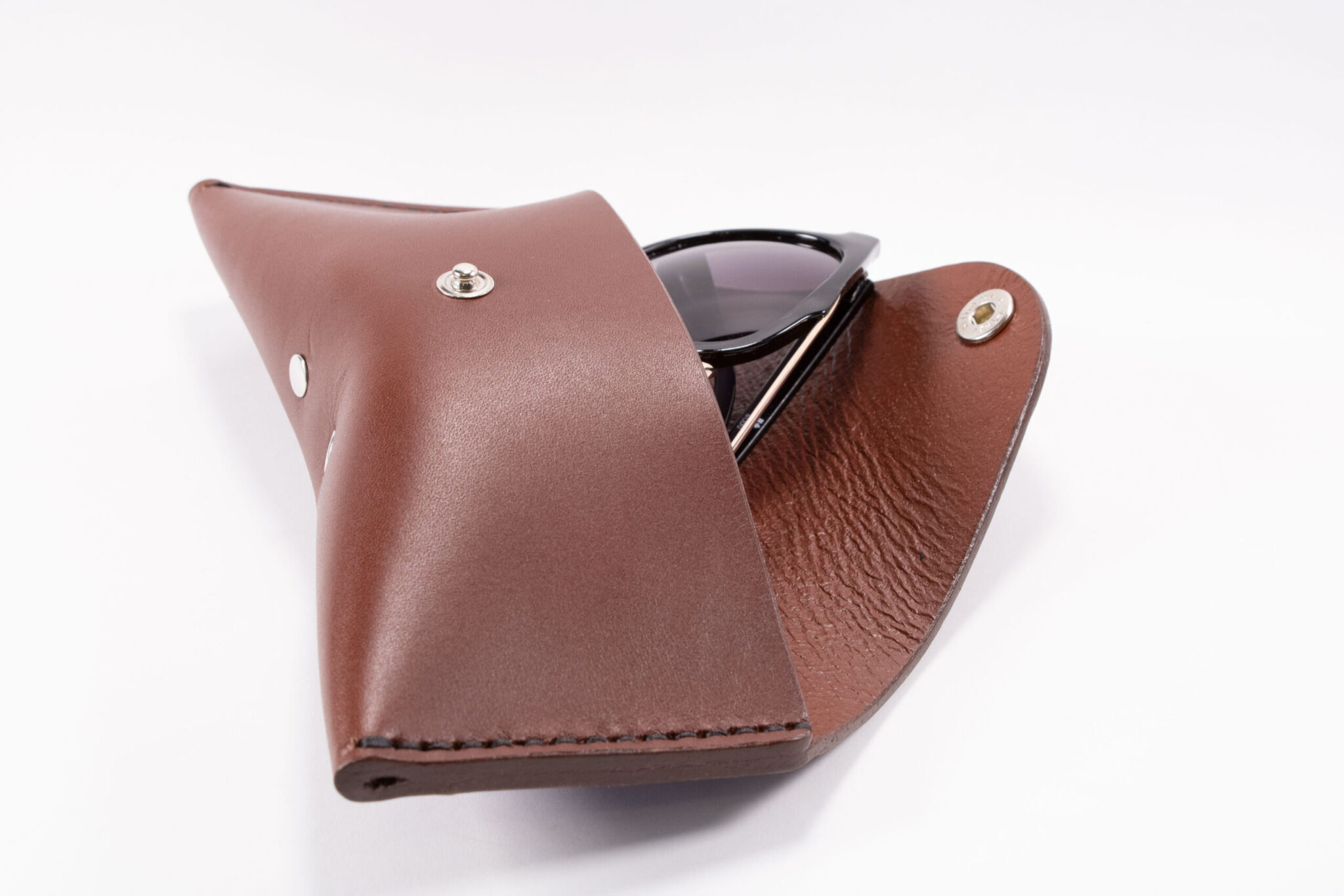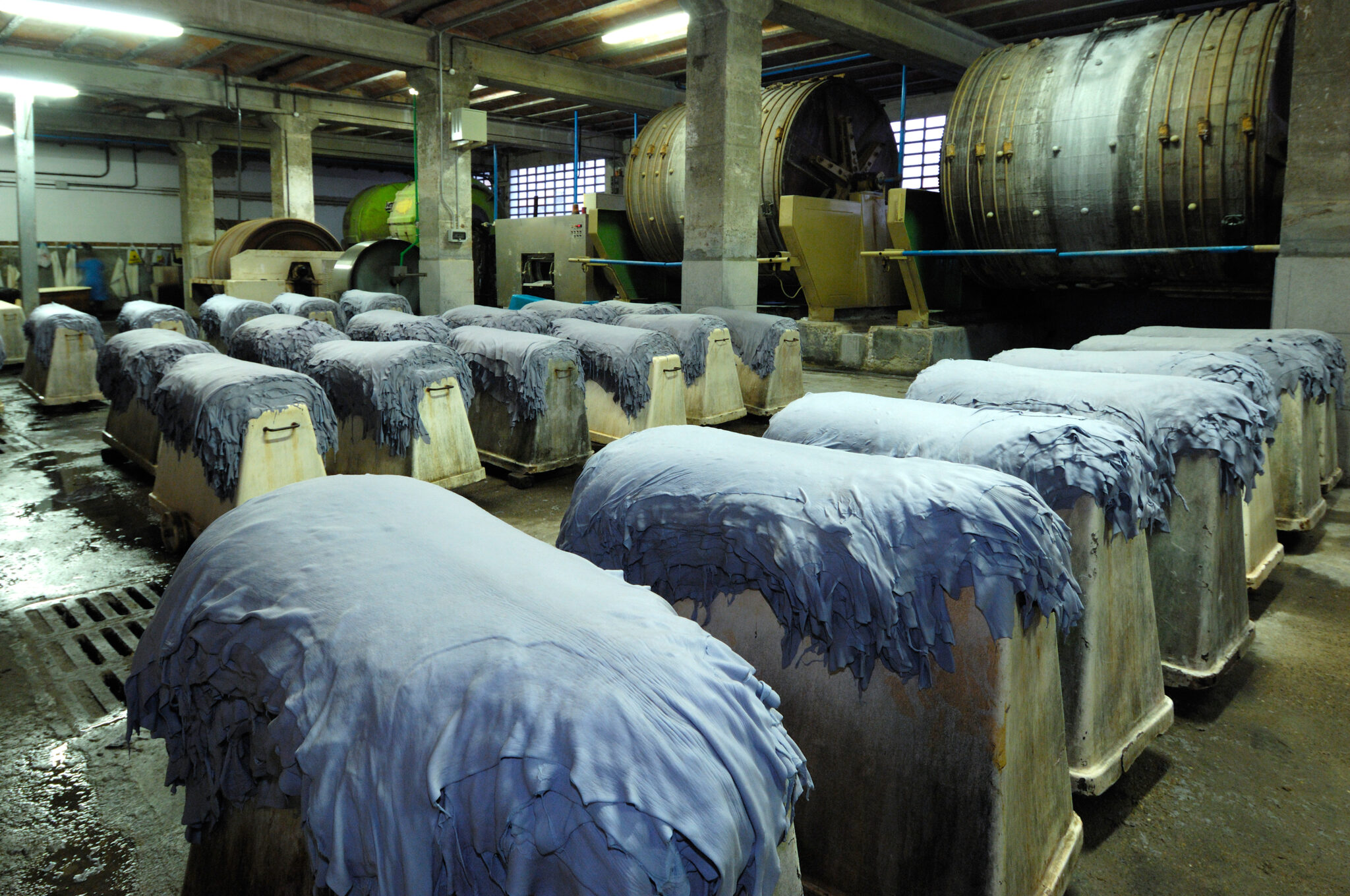By Kim Bui
Vegetable tanned leather and chrome tanned leather are often compared and, in some instances, used synonymously with one another. While vegetable tanning and chrome tanning uses real animal skin or hides to produce leather and go through the same pre-tanning process, their similarities end there. So, whether you’re looking for an investment piece or a budget-friendly piece, colourful or uncoloured, environmentally friendly or non-environmentally friendly, the answer lies in the tanning method.
What is Tanning?
When we talk about tanning, we are not talking about laying the animal skin or hide in the sun and dehydrating the raw material the same way that jerky is made. Instead, the term tanning derives from the word “tannins” which is a natural substance produced by plants. Some examples include tree barks, leaves, fruits, and seeds. Therefore, leather tanning is the process of turning animal skin into leather using natural substances. This process is called vegetable-tanned leather. However, since the inception of tanning leather came about, humans have discovered different methods to produce all kinds of leather such as synthetic faux leather, patent leather, and the most popular today, chrome tanned leather.
Vegetable Tanned Leather
History
For thousands of years, every piece of leather was vegetable tanned. The practice dates back to the prehistoric era with estimates landing somewhere around the Ice Age era. The earliest humans used to travel long distances on foot so they needed material that would protect their body and feet while walking. At the time, animal skin was the sturdiest material to date.
The problem with using hides and skins for shoes was that the material was organic making it easy to decompose, harden, putrefy, and even grow bacteria. No one knows who invented vegetable tanning, or if it was intentionally invented at all. What we do know is that when leather tanning did come about, it solved a serious pain faced by the earliest humans, protection from the elements.
Since then, vegetable tanning has been developed, used, and adapted to meet the needs and demands of different societies.
The Egyptians began the vegetable tanning method to create their famous sandals, belts, bags, shields, saddles, and horse harnesses which can now be found in museums as artifacts. The Greeks and Romans used it for similar purposes, however, the Romans took it one step further and used leather as their currency. Leather became a symbol of status and wealth for the Romans.
At a time when options for materials were scarce, vegetable tanned leather proved to be an invaluable material and plays a large role in the culture of many historical societies.
In 2022, vegetable tanned leather only makes up 10% of the entire leather industry and only 4% of the total trade in footwear and headwear. Although vegetable tanned leather comprises of a small portion of the leather industry, it is still a highly coveted material in the 21st-century fashion world for its timeless appearance and undeniable quality.
How is vegetable tanned leather made?
Vegetable tanning begins once the tanneries have received the raw skin.
During the pre-tanning process, the raw skin goes through a series of stages such as de-furring, fleshing, and splitting to prep the skin for tanning and ensure that the skin doesn’t putrefy. The skin will then be placed inside a large drum, usually a wooden one as seen in image 1, and then treated with hydrochloric acid, sulfuric acid, or lactic acid to neutralize the pH of the skin. This is also known as the liming process.
After the skin is prepped, it is ready to be soaked in a water bath. All vegetable tanned leather uses tannins which, as mentioned above, are derived from natural plants. Tannin is what turns the raw skin into a compact and resistant material. The tannin is mixed into a large water bath and raw skin is fully immersed in the water until the tanning process is finished.
The whole process of vegetable tanning can take anywhere from two months to two years. It is because of this long process that vegetable tanning is known to be laborious and time-consuming. In the current fashion industry, many would sacrifice quality for efficiency, but the results of the vegetable tanned leather are unmatched durability, guaranteed to last, and it develops a beautiful patina as it ages over time.

Properties of Tannins
While every vegetable tanned leather uses a tannin solution, not every tannin solution is the same. In fact, every tannery has personalized its vegetable tanning method by adjusting the recipe or the technique to suit their personal needs. Here are some examples:
- La Ruota S.r.l Cuoi & Pelami
Located in Tuscany, Italy, La Ruota S.r.l Cuoi & Pellamis tanning practice is a hybrid of old-world techniques with new world trends. With a specialty in producing leather from cowhide shoulder and calfskins, La Ruota S.r.l Cuoi Pellami tans exclusively with vegetable extracts, specifically tannins from the Quebracho tree and the Mimosa tree.
The Quebracho tree and the Mimosa tree are two of the best, and most popular, plants in the world for tannin extraction. While the Quebracho tree grows in a region between northern Argentina, Paraguay, and Brazil, the Mimosa tree grows in Australia, Southeast Asia, and South Africa. Both trees produce wood that is a rich reddish-brown colour and both develop a tannin concentration of about 20%-30% and 3%-4% soluble non-tannin. The rich tannin of these plants creates leather that is also reddish-brown, allowing artisans to craft colour-rich products like the Gothica Australias No.4 Belt and the Carl-Gustaf Hard Glasses Case as seen in image 2.

- Tärnsjö Garveri
Tärnsjö Garveri is a tannery located in Sweden that produces leather exclusively using hides from local Swedish farms. At their tannery, Tärnsjö Garveri does not use one type of tannin for their tannin solution, but rather they use an assortment of tannins depending on the type of leather product that is being created.
An example of how different tannins are used for different leathers can be seen in the Chestnut tree and the Sumach tree.
The tannin extracted from the chestnut tree is perfect for tanning heavy skin because it contains 30%-32% tannin. The high amount of tannin makes it easier to permeate through heavy, and thicker skin giving the final leather product a deep earthy tone. A product that was most likely tanned using high tannin concentration is the Birka Leather Coasters which were made with a thick piece of leather to endure water stains and excessive usage.
Alternatively, the Sumach tree only contains about 15%-20% of tannin, therefore, tannin from the Sumach tree would be used for products that require a thinner fancier leather such as book bindings, the upper part of a shoe, or furniture.
- Badalassi Carlo S.r.l
Badalassi Carlo S.r.l works in collaboration with the legendary Pelle Conciata al Vegetale Consortium in Toscana, Italy. The consortium promotes the concept of natural vegetable tanning in an environmentally sustainable manner while keeping the Italian vegetable tanning tradition alive. Like the other tanneries, Badalassi Carlo S.r.l uses tannin extracted from plants to create durable leather for products such as the Wayfaring Stranger Wallet.
Environmental Impact
In terms of environmentally friendly and human-friendly tanning methods, vegetable tanning paves the way for the entire leather industry.
Vegetable tanned leather is made from raw skin sourced directly from the animal and uses organic tannins to tan the leather. After the tanning process, the leather is also left un-treated meaning that no synthetic substances are added to the leather. Due to its natural and organic process, vegetable tanned leather is safe for the environment, and it is non-toxic to human touch ensuring the protection and safety of workers and consumers alike.
In addition to the natural production of vegetable tanned leather, it is also the strongest and sturdiest leather ever created making them extremely durable. All artisans who create material items using vegetable tanned leather are making them with longevity in mind. Vegetable tanned leather, with proper care, can last for decades and even multiple lifetimes minimizing the international contribution to the textile landfill that is overflowing yearly.
The biggest impact vegetable tanned leather has on the environment is the amount of water necessary to create the leather. While the discharge is non-toxic to humans and the environment, the amount of water needed to create vegetable tanned leather equates to almost 323 5-minute showers.
Chrome Tanned Leather
History
Chromium (III) Sulfate (chrome) tanning is more recent in the sense that it is the newest form of tanning to be invented.
Discovered in the 1840s by German technologist Fredrich Ludwig Knapp and Swedish pharmacist and chemists Carl Erengisle Hylten Cavallius, the introduction of chromium salt had arguably created the biggest impact on the leather industry up until the 1840s and ever since then.
Created during an era of rising material consumption, chrome tanning proved to be a faster, less laborious, and inexpensive method of producing leather products. In addition to this, the discovery of synthetic dyes began to emerge and when tested with the chrome tanned leather, chrome tanned leather proved to hold colour much better than vegetable tanned leather could.
Since its inception, chrome tanned leather has been the preferred method of tanning making up more than 90% of the world’s leather in 2022.
How is Chrome Tanned Leather Made
Like vegetable tanned leather, the pre-tanning process for chrome tanned leather begins the same way.
The raw animal skin is stripped of any fur, flesh, and bones leaving behind nothing but the animal skin for the tanneries to use. Once the skin is prepped, the liming process begins.
The skin is placed in large drums containing a mixture of chemicals, salts, acids, and dyes that penetrate the skin, removing natural grease and fat that prime the skin for the tanning process.
Once the pre-tanning process is complete, the skin is taken out and placed in another water bath. This time, the water bath is filled with chromium-tanning agents such as Chrome III or Chrome VI. Using the chromium sulfate salt to accelerate the tanning process, the animal skin will come out of the water bath as a distinct blue leather also known as wet-blue as seen in image 3.
Properties of Chrome Tanned Leather
Unlike vegetable tanned leather that has hundreds of tannins, chrome only has two tanning agents to choose from, Chrome III and Chrome VI. Both produce the same results, a fast and less complex process with a cost-effective price tag, however, Chrome VI is the deadliest form of chrome to use.
Chrome tanning is not only faster and more cost-effective, but it is also more supple and water-resistant. This is beneficial when creating leather gloves and jackets because chrome tanned leather molds itself to the body instantly without having to break in the leather. It is also the preferred material for products that will most likely see a lot of outside debris because it is low maintenance.
What chrome tanned leather would not be good for are gun holsters or knife sheaths. The chromium salts, chemicals, and metals within the chrome tanned leather will react with metal items and risk corrosion. Chrome tanned leather would also not be good for the soles of your shoes as it is often thinner and softer.

Environmental Impact
Like any heavy metal chemical, chrome is extremely toxic. After the tanning process is complete and we receive that desired wet blue finish, we are also left with loads of toxic wastewater. If the wastewater is left untreated or disposed of improperly, it can cause massive impacts on the environment and to humans.
For the environment, the concoction of chemicals can turn the tanneries and farmlands into swamps filled with blue-tinted and toxic wastewater. However, even when the chemicals are properly disposed of, chrome tanned leather production still harms deforestation and biodiversity due to the greenhouse gas emissions from the tanning process.
As for the human impact, the chrome tanned leather industry is constantly being scrutinized for its blatant disregard for its workers’ health.
In an article published by The Ecologist, they outlined the human impact chrome tanning had on workers by telling the story of 32-year-old Ramu. Ramu, along with five other tannery workers suffocated and died inside a waste tank due to the toxic chemical gas being released. Unfortunately, the story of Remu is not rare. There are hundreds of stories that are similar, if not the same, to Remus.
In addition to the chrome tanning being harmful to workers, it is also harmful to consumers as well. If the tannery used Chrome VI to tan their skins, consumers are at risk of cancer, vision impairment, respiratory problems, and problems to their internal organs such as their livers and kidney.
Final Thoughts
Leather tanning, both vegetable, and chrome, are vital methods in creating the leather goods you see all over the world today.
Vegetable tanned leather continues to be associated with tradition and craft. It is 100% naturally made with tannin solution from various tree bark, seeds, and plants producing a beautiful deep earthy finish. While this method is the most environmentally friendly method of tanning leather, the entire process is long and laborious taking tanneries anywhere from 2 months to 2 years to create. Today, relatively few tanneries have the capability of producing vegetable tanned leather making this type of leather rare and expensive.
On the other hand, chrome tanned leather which accounts for almost 90% of the world’s leather production, is an inexpensive alternative to vegetable tanned leather. This type of leather is flexible, water-resistant, can produce an array of vibrant colours, and can be made within a couple of hours to a couple of days. The biggest downside to chrome tanned leather is that the vast amounts of chemicals used during the tanning process make this method harmful to the environment and to humans.
After reading this in-depth explanation of the difference between vegetable tanned leather and chrome tanned leather, we hope that you will walk away feeling confident in your choice of leather based on your needs, preferences, and style.
At FredFloris, we make the conscious decision to exclusively work with vegetable tanned leather.
